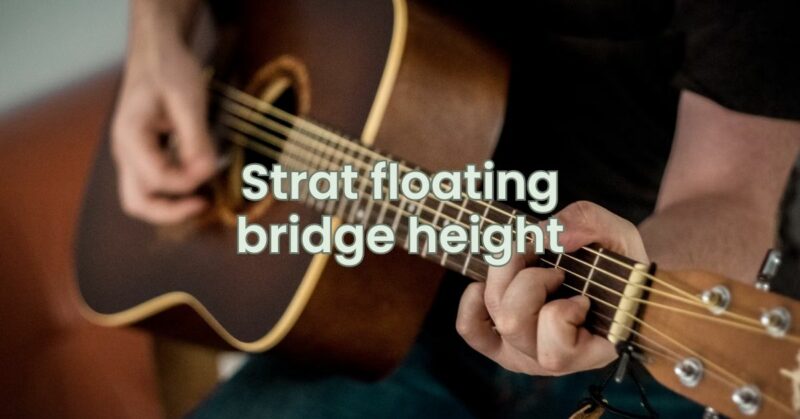The floating bridge is an integral part of the iconic Fender Stratocaster, providing players with the ability to manipulate pitch and create expressive tremolo effects. Achieving the right floating bridge height is essential for optimal playability and tuning stability. In this guide, we will explore the importance of bridge height, how to set it up correctly, and the impact it has on your guitar’s performance.
Understanding Floating Bridges
A floating bridge, also known as a tremolo bridge, is a movable bridge system attached to the body of the guitar by springs. This design allows the bridge to move in both upward and downward directions, enabling pitch changes through tremolo arm manipulation. The floating bridge is an essential feature for players seeking expressive and dynamic playing styles.
Importance of Bridge Height
The height of the floating bridge significantly influences the playability and performance of your Stratocaster. Here’s why it matters:
- Action and Playability: The bridge height affects the action of your guitar, which is the distance between the strings and the fretboard. Too high of a bridge will make the strings harder to press down, causing discomfort and hindering playability. Conversely, a bridge set too low may result in buzzing or fretting out when bending strings or playing with vigor.
- Intonation: Proper bridge height is crucial for accurate intonation. Intonation ensures that each note plays in tune across the entire fretboard. If the bridge height is incorrect, it can lead to issues with intonation, making your guitar sound out of tune, especially when playing chords or higher up the neck.
- Tremolo Stability: The balance between string tension and spring tension in a floating bridge affects its stability. Setting the bridge height correctly ensures that the bridge returns to its neutral position when using the tremolo arm, maintaining tuning stability.
How to Adjust the Bridge Height
Adjusting the floating bridge height requires precision and attention to detail. Here’s a step-by-step guide to help you set it up properly:
- Detune the Guitar: Before making any adjustments, detune your guitar to relieve tension on the bridge and springs.
- Access the Tremolo Springs: Remove the backplate of your Stratocaster to access the tremolo springs. The number of springs may vary, but most Strats have three or five.
- Balancing String Tension: The floating bridge relies on the equilibrium between string tension and spring tension. To adjust the bridge height, add or remove springs as needed to achieve the desired balance.
- Adjust the Claw Screws: The claw screws, located inside the tremolo cavity, control the tension of the springs. Tightening the screws increases spring tension, pulling the bridge closer to the body, while loosening them reduces tension, allowing the bridge to rise.
- Set the Bridge Height: Once the spring tension is balanced, adjust the individual bridge saddles using a screwdriver. Turn the screws clockwise to raise the bridge or counterclockwise to lower it. Maintain an even height across all strings, and ensure that the radius of the saddles matches the fretboard curvature.
- Tune and Check: After adjusting the bridge height, tune your guitar and check the intonation. Make any necessary fine-tuning adjustments until your guitar plays in tune at every fret.
Conclusion
The floating bridge height is a critical factor in achieving optimal playability, intonation, and tremolo stability on your Fender Stratocaster. Understanding its impact and learning how to set it up correctly will empower you to customize your guitar to suit your playing style and preferences. Remember that making adjustments to your guitar requires patience and attention to detail, but the effort is well worth it for the enhanced performance and musical expression it brings to your playing.

